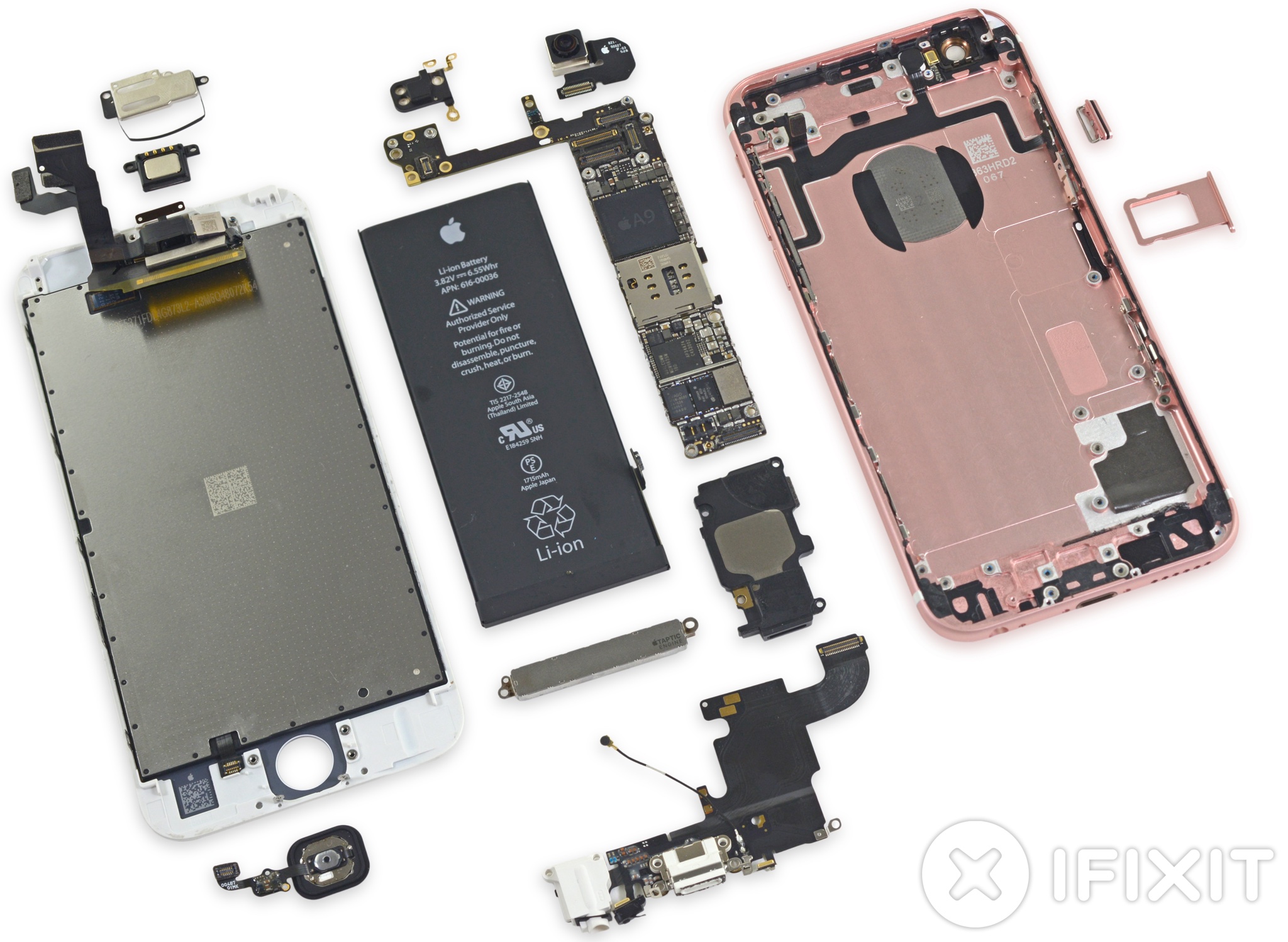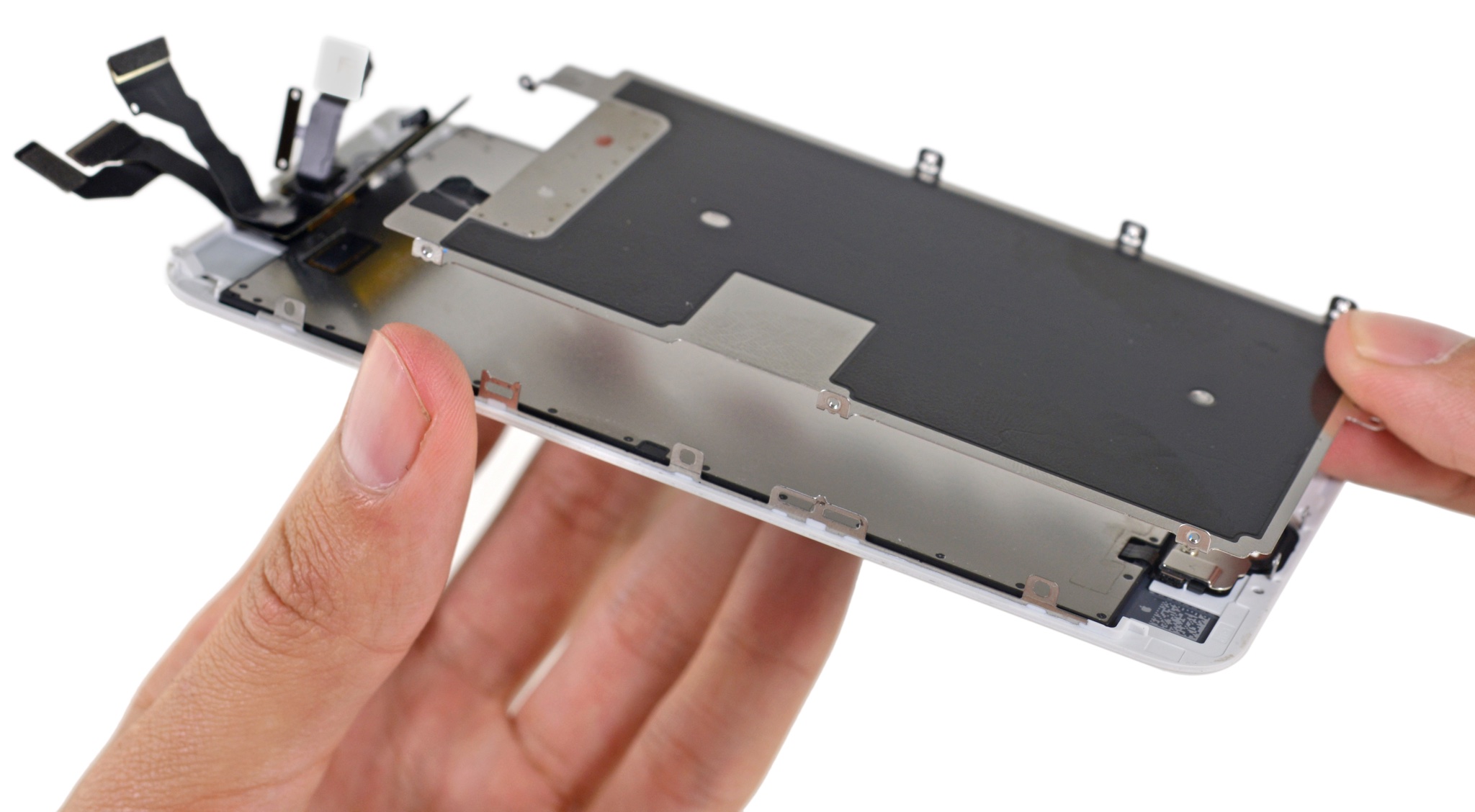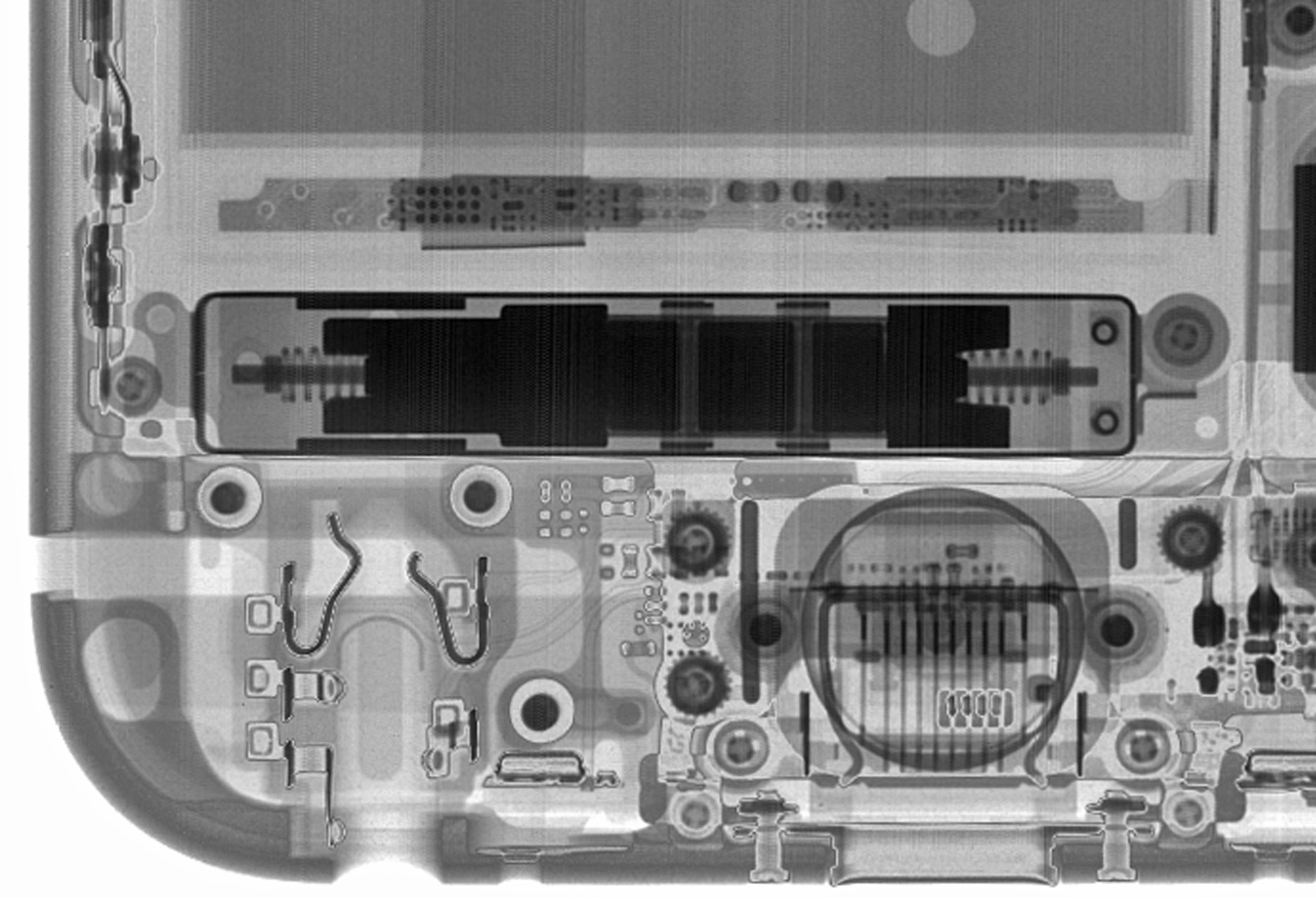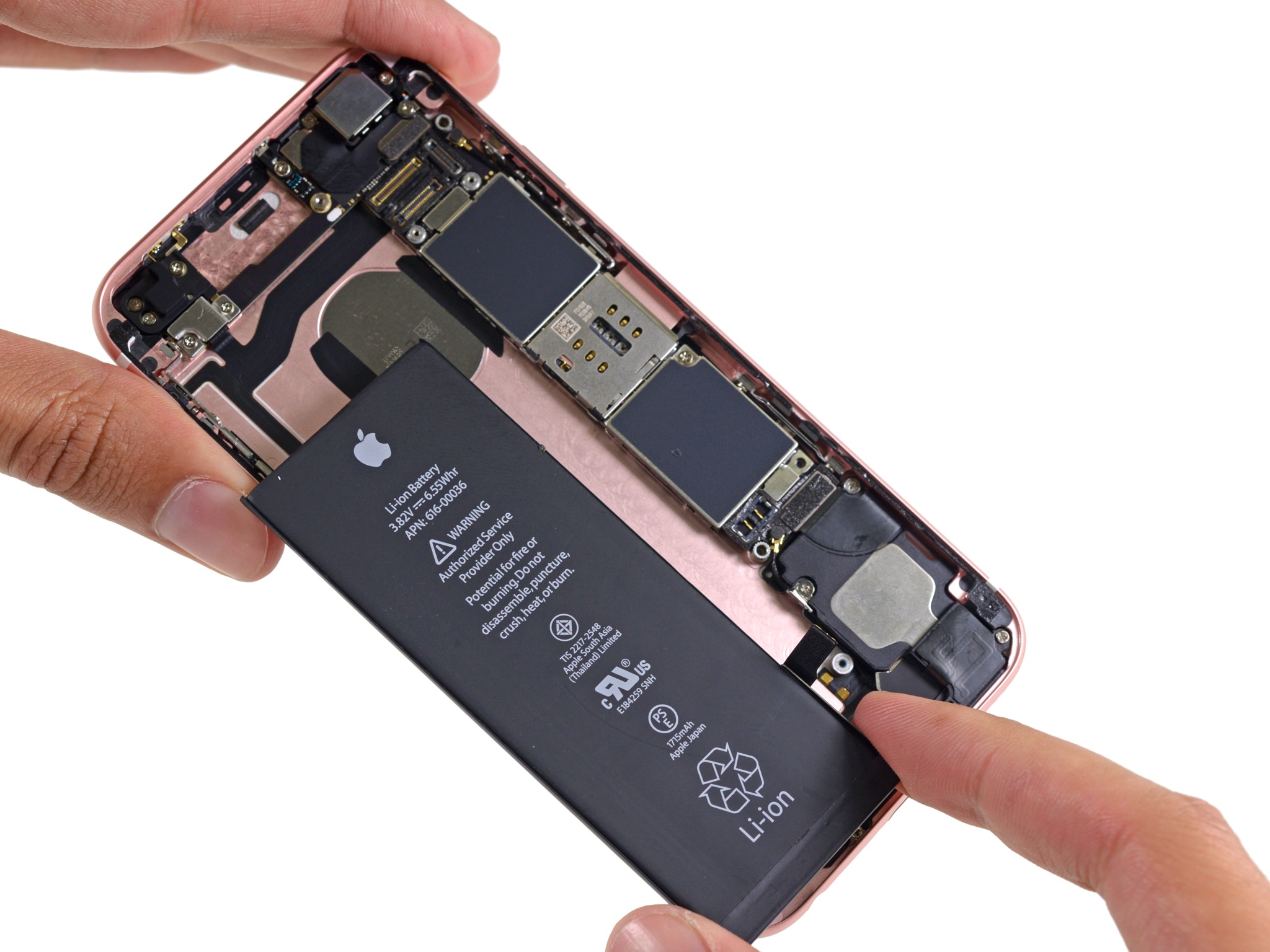Repair wizards over at iFixit have performed their teardown routine by prying open the 4.7-inch iPhone 6s (model A1688/A1633) in an effort to identify its components, analyze their internal layout and calculate the device’s repairability score.
While the new phone does feature a slightly smaller battery due to a heavier display with additional capacitive sensors, Apple’s new Taptic Engine and a bigger ‘A9’ system-on-a-chip, the device packs in fewer chips overall and has the same repairability score as last year’s iPhone 6.
iFixit says that “getting into the new iPhone is almost as easy as it was before,” thanks to some surprise adhesive lurking beneath the display.
Here are your key takeaways.
A9—Apple’s third-generation 64-bit microchip got a size bump from last year’s A8 and now measures roughly 14.5 x 15 mm, up from 13.5 x 14.5 mm on the A8.
M9 motion chip—Apple’s third-generation motion co-processor is still basically a rebranded part manufacture by NXP. This time around, however, the company has saved space by embedding the M9 inside the main A9 chip.
Heavier display—3D Touch requires an additional capacitive layer, comprised of 96 pressure sensors. It’s embedded into the backlight and makes the whole display assembly 15 grams heavier at 60 grams than the iPhone 6 display. As such, 3D Touch has contributed the most to the iPhone 6s being a tad heavier and imperceptibly thicker than its predecessor.
Taptic Engine—Apple’s Taptic Engine first debuted on the Apple Watch, then made its way into the trackpad of new Mac notebooks and now it’s replaced the old and somewhat dull vibrator in previous iPhone models.
Smaller battery—Due to 3D Touch and Taptic Engine taking more space, Apple had to reduce battery size, which brought its capacity down a bit, but battery life remains the same. The lithium-ion cell comes in at 3.8 V, 6.55 Whr and 1,715 mAh, a small but notable decrease from the 1,810 mAh battery in last year’s iPhone 6.
Semiconductor lovers, here are the chips inside the iPhone 6s:
- Apple A9 APL0898 SoC + Samsung 2 GB LPDDR4 RAM
- Qualcomm MDM9635M LTE Cat. 6 Modem (vs. the MDM9625M found in the iPhone 6)
- InvenSense MP67B 6-axis Gyroscope and Accelerometer Combo (also found in iPhone 6)
- Bosch Sensortec 3P7 LA 3-axis Accelerometer (likely BMA280)
- TriQuint TQF6405 Power Amplifier Module
- Skyworks SKY77812 Power Amplifer Module
- Avago AFEM-8030 Power Amplifier Module
- 57A6CVI
- Qualcomm QFE1100 Envelope Tracking IC
- Toshiba THGBX5G7D2KLFXG 16 GB 19 nm NAND Flash Memory
- Universal Scientific Industrial 339S00043 Wi-Fi Module
- NXP 66V10 NFC Controller (vs. 65V10 found in iPhone 6)
- Apple/Dialog 338S00120 Power Management IC
- Apple/Cirrus Logic 338S00105 Audio IC
- Qualcomm PMD9635 Power Management IC
- Skyworks SKY77357 Power Amplifier Module
- Murata 240 Front-End Module
- RF Micro Devices RF5150 Antenna Switch
- NXP 1610A3
- Apple/Cirrus Logic 338S1285 Audio IC
- Texas Instruments 65730AOP Power Management IC
- Qualcomm WTR3925 Radio Frequency Transceive
- 343S00014
The Touch ID cable is still paired to the logic board, complicating repairs.
Speaking of repairability, iFixit notes that although Apple’s new phone still uses proprietary Pentalobe screws on the exterior, requiring a specialty screwdriver to remove, it benefits from smart choices that simplify repairs:
- The display assembly continues to be the first component out, simplifying screen repairs.
- The battery is straightforward to access. Removing it requires a proprietary pentalobe screwdriver and knowledge of the adhesive removal technique, but is not difficult.
As a result, the repairability score of the iPhone 6s has remained unchanged from the iPhone 6 as the new phone earns a 7 out of 10 on iFixit’s Repairability scale.
Source: iFixit



